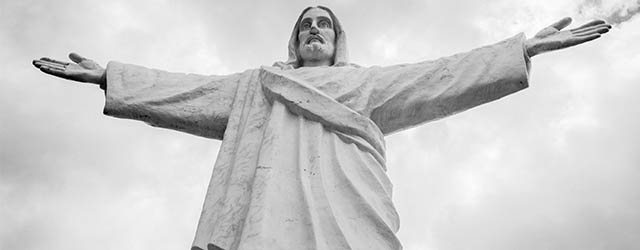The annual meetings of the International Monetary Fund and World Bank in Lima, Peru, in October, will provide world leaders with the right stage to discuss poverty and inequality and suggest ways for Latin American economies to foster growth less dependent on commodities, according to former president of Peru, Alejandro Toledo.

Toledo, who was speaking in New York about his latest book, The Shared Society: A Vision for the Global Future of Latin America (Redwood Press) stressed that the economy of Peru is still too dependent on the export of commodities and that the government should try to refocus resources toward sectors such as agriculture, high-tech manufacturing and those with more value-added output. This will create a less volatile economic cycle and make the country less dependent on the world economy, he said. His emphasis is on long-term policies, including a major focus on the importance of education.
Toledo served as president from 2001 to 2006. He is unofficially preparing to run again in the 2016 election, following a failed attempt in 2011. The incumbent, Ollanta Umala, who was elected in 2011, must step down because of constitutional limits against consecutive terms.
“I think that the World Bank and the IMF know the progress we have made in Latin America and Peru and how we learned our lesson to manage our economy. Hopefully, the meetings will allow some exchanges of opinion on how we can increase the level of economic growth with a different composition,” Toledo told the audience at the Americas Society/ Council of the Americas.
The Peruvian economy was underperforming when Toledo took the reins in 2001, and his policies, in line with IMF recommendations, helped differentiate the country from its Andean neighbors Bolivia and Ecuador. “Under [Alberto] Fujimori [Peru’s president from 1990 to 2000] the economy suffered greatly, and, as a result, at the turn of the century was in pretty rough shape,” said Ronald Bruce St John, author of Toledo’s Peru: Vision and Reality, published in 2010. “Toledo promised he could jump-start the economy and create new jobs. He had a hard time doing that, but one thing he did do was to run proper macroeconomic policies, which have been followed since then by the administrations of Alan García and Ollanta Humala.”
Peru has been one of the fastest growing countries in Latin America, boosted by strong demand from China for its commodities, including copper, lead, zinc, tin and iron. Its gross domestic product, which had risen at annual rates well above 6% in the 10 years through 2013–with the notable exception of a decline in 2009–saw growth slow to 2.4% in 2014, despite expansionary monetary and fiscal policies. Improvement is expected this year, with most economists forecasting growth at about 4%.
“The [IMF’s] decision [to hold the annual meetings in Peru] represents a vote of confidence for the country and a recognition of what it has achieved in the past 20 years in terms of economic growth and poverty reduction,” said Katie Micklethwaite,senior analyst for Latin America at VeriskMaplecroft in London. “The event has been very welcomed [by the government] because it comes at a time when public confidence in the economy is faltering.”
The last time that the boards of governors of the World Bank and the IMF met in Latin America was 48 years ago, when Rio de Janeiro hosted the annual meetings. For the occasion, Lima expects 16,000 participants from 188 countries. The World Bank/IMF annual meetings are held in different international locations every three years, with the intervening meetings always held in Washington, DC.
The delegates will find a region whose economy is still mainly led by exports and thus at the mercy of the international economic cycle. “I think that the income or GDP per capita hides more than it reveals . . . This meeting may be very useful,” Toledo said.
“In Latin America we say that we have reduced poverty and inequality as a consequence of economic growth,” Toledo noted, adding that this goal is only partially realized as some people still have limited access to potable water and proper sanitation.
Toledo isn’t shy about his desire to run again for president, but his chances appear modest. Recent polls show several other potential candidates, such as Toledo’s former finance minister Pedro Pablo Kuczynski, former president Alan García and Keiko Fujimori, the daughter of Alberto Fujimori, ahead of him.
“Peruvian elections are highly unpredictable, and there is still not a clear outsider who is likely to win,” said Antonio Villa Mardon, CEO of investment bank Lynx in Lima. “Toledo is the last person who can aspire to be reelected… His image is better abroad that in Peru.”



